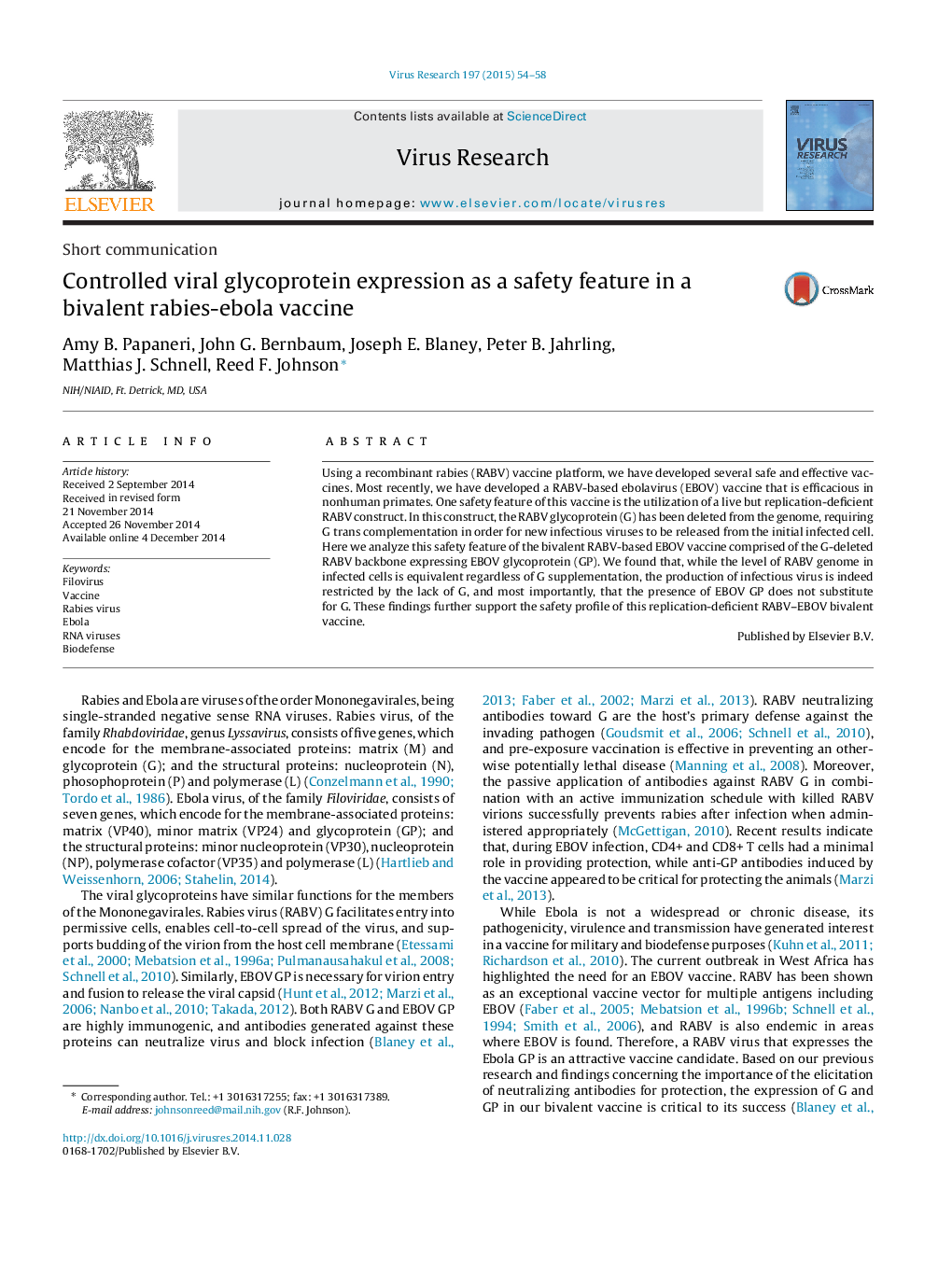| Article ID | Journal | Published Year | Pages | File Type |
|---|---|---|---|---|
| 3428299 | Virus Research | 2015 | 5 Pages |
•Our replication deficient rabies-ebolavirus bivalent vaccine candidate is capable of efficient infection in cell culture as evidenced by equivalent genome levels between the rabies virus glycoprotein trans-complementing cell line and target VeroE6 cells.•In our rabies G deleted vaccine construct, RABV-G is not synthesized nor is it recycled and incorporated into budding virions as determined by electron and confocal microscopy.•Our G deleted rabies-ebola GP vaccine candidate may provide an improvement over existing ebola virus vaccines.
Using a recombinant rabies (RABV) vaccine platform, we have developed several safe and effective vaccines. Most recently, we have developed a RABV-based ebolavirus (EBOV) vaccine that is efficacious in nonhuman primates. One safety feature of this vaccine is the utilization of a live but replication-deficient RABV construct. In this construct, the RABV glycoprotein (G) has been deleted from the genome, requiring G trans complementation in order for new infectious viruses to be released from the initial infected cell. Here we analyze this safety feature of the bivalent RABV-based EBOV vaccine comprised of the G-deleted RABV backbone expressing EBOV glycoprotein (GP). We found that, while the level of RABV genome in infected cells is equivalent regardless of G supplementation, the production of infectious virus is indeed restricted by the lack of G, and most importantly, that the presence of EBOV GP does not substitute for G. These findings further support the safety profile of this replication-deficient RABV–EBOV bivalent vaccine.
